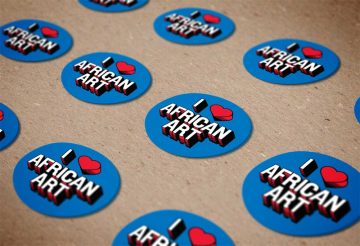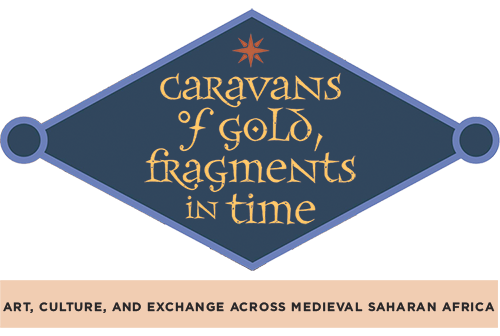
Caravans of Gold home | Saharan Echoes | Driving Desires: Gold and Salt | The Long Reach of the Sahara |
Archaeological Imagination Station: Giving Context to Fragments / Hi Videos | Saharan Frontiers | Shifting Away from the Sahara | Teachers Guide
________________________________________
The caravans, in order to cross these arid deserts, take supplies of water in water-skins carried on camels’ backs. In the land of the Sudan there are many arid deserts like this. Most of its terrain is sand that is swept by the winds, and carried from place to place, and no water is found. The land is very hot and scorching.
—Al-Idrisi, 1154 C.E.
Across sands of time More recent material and cultural practices can sometimes provide insights into imagining the past. Medieval accounts of the Sahara offer only tantalizing bits of information about daily life in the region, and material fragments from archaeological sites offer limited additions to this picture.
Like their predecessors, artists in today’s Sahara and its hinterlands are connected to a global economy, and their works often reflect these evolving patterns. Yet, the forms, functions, and decorative patterns on even recent Saharan jewelry, leatherwork, and textiles are sometimes reflective of earlier medieval precedents.
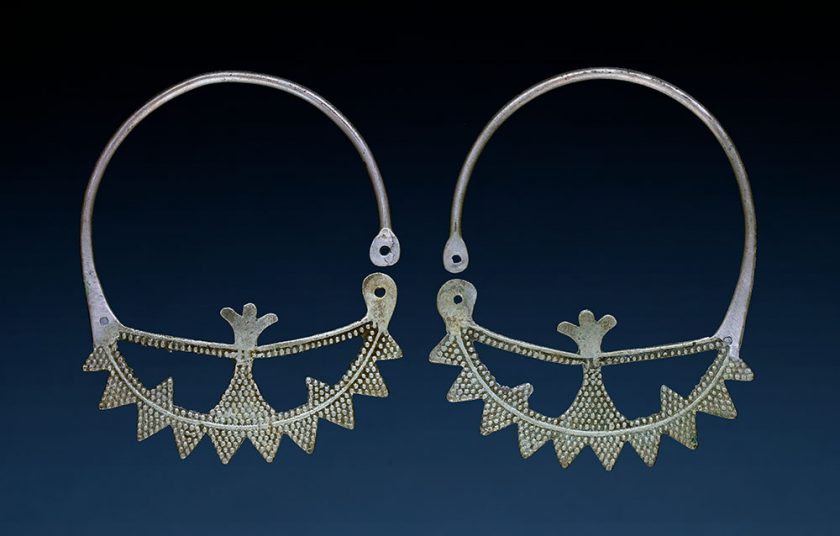
Tizi Ouzou, Bejaia, Bouira, or Boumerdes Province, Algeria
Earrings
19th century C.E.
Silver
Field Museum of Natural History, Chicago, IL, gift of E. E. Ayer, 1911, 209909.1–2
Timeless Style | The form of these earrings is reminiscent of the small gold earrings, likely of Western Sudanic origin, that were unearthed in a 14th-century C.E. burial at Durbi Takusheyi in the Central Sudan. They are a reminder of the circulation of forms and techniques in the medieval period, and of their continuing legacy into the present day.
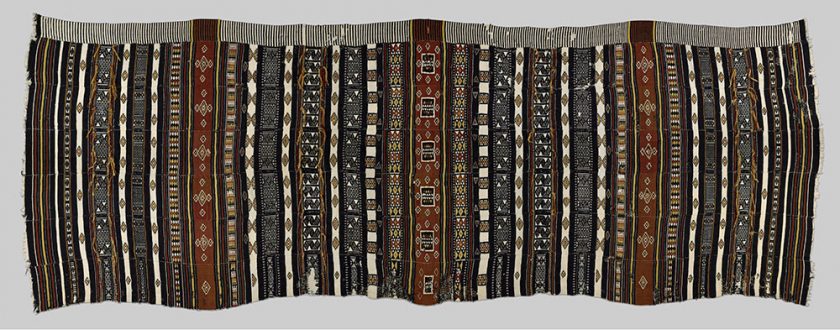
Mali
Arkilla kerka (tent panel)
Mid-20th century C.E.
Cotton and wool
The Art Institute of Chicago, Chicago, IL, gift of Gil and Roda Graham, 2002.535
Weaving a Saharan Style | Fulbe weavers belong to a specialized class of male artists who weave narrow strips of cloth on vertical looms. The weaver sews individually woven strips together to create the illusion of repeating horizontal bands.
The overall visual effect of the resulting panel resembles textiles woven by Amazigh women on vertical looms. Within this overarching structure, Amazigh women and Fulbe men weave similar repeating zigzag, triangle, diamond, and Xshaped patterns. This shared visual vocabulary reveals the centuries of contact in and around the desert that resulted in the development of a distinctive cultural and artistic style recognizable as “Saharan.”
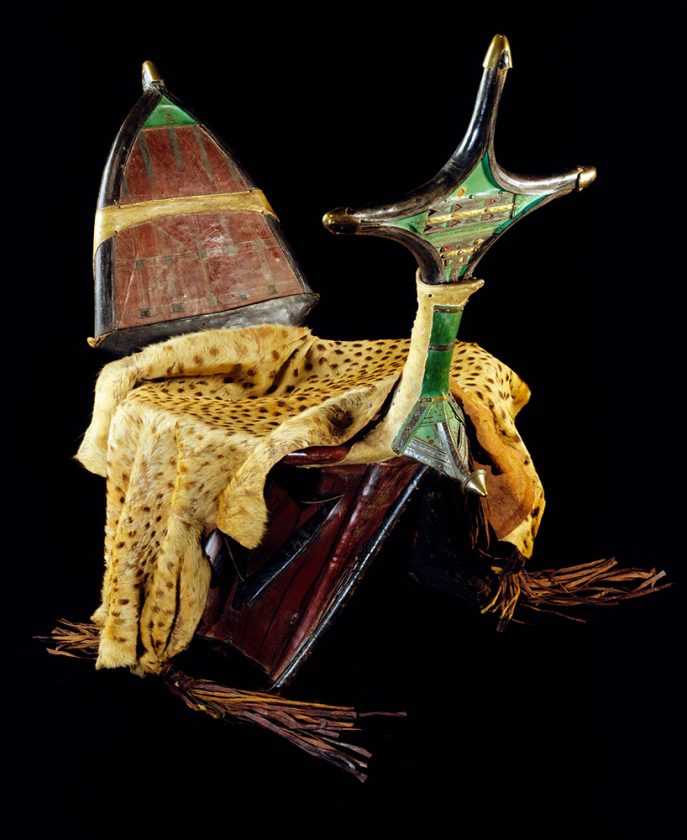
Algeria
Tarik or tamzak (camel saddle)
Early 20th century C.E.
Leather, rawhide, wood, parchment or vellum, wool, silk, tin-plated metal, brass-plated metal, iron, copper alloy
Peabody Museum of Archaeology and Ethnology, Harvard University, Cambridge, MA, gift of the Estate of Lloyd Cabot Briggs, 1975, 975-32-50/11926
Plodding Across Seas of Change | Camels changed Saharan history. Trans-Saharan commerce during antiquity was irregular—until the widespread adoption of the camel in the early centuries of the Common Era, which facilitated trade across and within the Sahara.
Tuareg artists continue to make camel saddles by covering the wood core with red- and green-dyed leather and decorating the pommel and other parts of the saddle with metal embellishments filled with geometric patterns similar to those found in Tuareg jewelry.
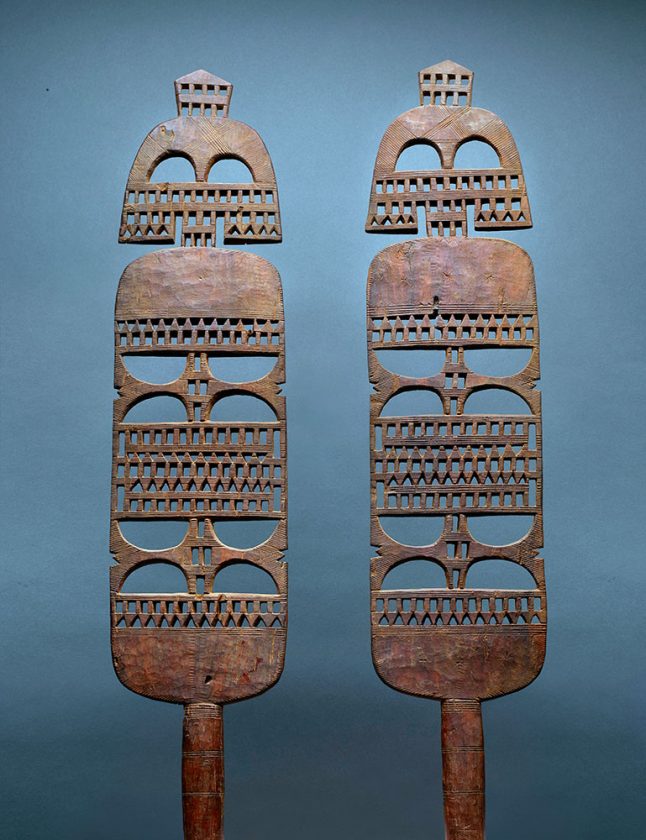
Mali or Niger
Ehel (tent poles)
Mid-20th century C.E.
Wood
Field Museum of Natural History, Chicago, IL, 279194.1–2
Supporting Women’s Wealth | Poles like these were used to support the woven panels that decorated and to define the interior spaces of a nomadic tent. Throughout the Sahara, a tent was a woman’s property. It was typically given to a new bride by her mother, who collected goatskins throughout her daughter’s childhood that she pieced together into a tent. Over the course of the 20th century, environmental and societal changes have led the Sahara’s nomadic populations to adopt more sedentary lifestyles and tents are used ever less frequently for daily living.
